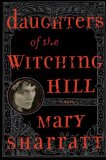Summary | Excerpt | Reading Guide | Reviews | Beyond the book | Read-Alikes | Genres & Themes | Author Bio

A Novel
by Erika MailmanThe slowly starving villagers of
Tierkinddorf are getting desperate. It is the middle
of a bitterly cold winter following the second
summer in which there has been no harvest. Elderly
Gude Muller, sinking into dementia, knows that her
position in the house she and her husband Hensel
built is precarious now that it is ruled by her
daughter-in-law, Irmeltrud, who sees her as an
unnecessary mouth to feed; but at least she still
has the love of her son, Jost, and the companionship
of her old friend Kunne, the local healer.
Things take a turn for the worse when a fat Friar
arrives clutching a well used copy of the medieval
guide to identifying witches, The Witch's
Hammer, and quickly and insidiously turns the
villagers on one another in their efforts to root
out the witches among them so the curse on the
village can be lifted and the good times can return.
Soon neighbor is turning on neighbor; and frail Gude
finds herself barred from her house on one of the
coldest nights of the year, left to wander in the
woods where she encounters visions of her dead
husband, rich banquets, the devil and witches.
Like Gude, the reader is not clear whether what she
experiences is real, or not. Is she indeed a witch
or just a good woman caught up in bad times? Whether
witchcraft is real or not is simply not at issue
here because, for the people of Tierkinddorf, it is
undisputed fact. Mailman sets her characters'
hearts and minds firmly in their milieu and,
thankfully, avoids gifting any of them with a
heightened morality centuries ahead of their time
and education. She also avoids falling into the trap
of presenting Christianity as the bad guy,
overrunning the older, more benign ways. Granted,
the Christian friar finds three people to burn; but
the village, nominally Christian but rooted in pagan
practice, finds its own, who is identified with rune
sticks (which predate Christianity).
Mailman's interest in the topic of witch-hunts stems
from the discovery that one of her ancestors,
Mary Bliss Parsons, was accused of witchcraft at
least twice in 17th century Massachusetts. Mailman
is separated from her notoriously maligned ancestor
by just eleven generations. At first glance this
might cause the reader to marvel at how far our
civilization has come in so short a time, but then
one is checked by the realization that the braying
mob of the witch-hunt era has never gone away - it
just keeps its head down waiting for times of stress
and the voice of authority to give it a new name and
feed the flames once again.
![]() This review was originally published in The BookBrowse Review in October 2007, and has been updated for the
October 2008 edition.
Click here to go to this issue.
This review was originally published in The BookBrowse Review in October 2007, and has been updated for the
October 2008 edition.
Click here to go to this issue.

If you liked The Witch's Trinity, try these:

by Anna Lawrence Pietroni
Published 2011
A story that feels mythical or folkloric, that is driven by a mystery, throbs with tension, and ends in conflagration. Ruby’s Spoon combines a gritty, hypervivid realism with the dreamlike richness of a fable.

Daughters of the Witching Hill
by Mary Sharratt
Published 2011
Daughters of the Witching Hill brings history to life in a vivid and wrenching account of a family sustained by love as they try to survive the hysteria of a witch-hunt.
Your guide toexceptional books
BookBrowse seeks out and recommends the best in contemporary fiction and nonfiction—books that not only engage and entertain but also deepen our understanding of ourselves and the world around us.